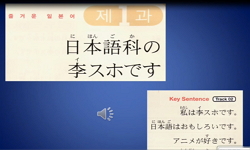일본 전통꽃꽂이는 고대의 경우 모두 병화(100%)만 이용되었고, 중세에 병화가 94.4%, Rikka가 5.5%로 비교적 단순했다. 그러나 근세에는 Rikka(66.5%), 나게이레(13.0%), Shoka(10.2%), 병화(4.7%), 성화(3.7%), ...
http://chineseinput.net/에서 pinyin(병음)방식으로 중국어를 변환할 수 있습니다.
변환된 중국어를 복사하여 사용하시면 됩니다.
- 中文 을 입력하시려면 zhongwen을 입력하시고 space를누르시면됩니다.
- 北京 을 입력하시려면 beijing을 입력하시고 space를 누르시면 됩니다.
https://www.riss.kr/link?id=A102068869
- 저자
- 발행기관
- 학술지명
- 권호사항
-
발행연도
2016
-
작성언어
Korean
- 주제어
-
등재정보
KCI등재
-
자료형태
학술저널
-
수록면
219-237(19쪽)
- 제공처
- 소장기관
-
0
상세조회 -
0
다운로드
부가정보
국문 초록 (Abstract)
일본 전통꽃꽂이는 고대의 경우 모두 병화(100%)만 이용되었고, 중세에 병화가 94.4%, Rikka가 5.5%로 비교적 단순했다. 그러나 근세에는 Rikka(66.5%), 나게이레(13.0%), Shoka(10.2%), 병화(4.7%), 성화(3.7%), 다데바나(0.9%) 등 다양한 종류가 사용되었다. 일본 전통꽃꽂이에 사용된 소재는 고대의 경우 연꽃과 국화가 각각 2회 나타났다. 중세에는 7종류가 11회 나타났는데, 이 중 벚꽃이 3회(27.3%), 매화와 동백이 각각 2회(18.2%) 씩 나타났다. 근세에는 40종류가 238회 나타났는데, 이 중 소나무가 47회(19.7%), 국화 및 매화가 각각 18회(7.6%), 대나무 14회(5.9%), 수선 12회(5.0%) 순으로 많이 나타났다. 일본 전통꽃꽂이에 사용된 화기는 고대의 경우 병(甁)이 5회 나타났다. 중세에는 5종류가 39회 나타났는데, 이 중 병이 16회(41.0%), 청동기 10회(25.6%), 반 7회(17.9%) 순으로 많이 나타났다. 근세에는 7종류가 227회 나타났는데, 이중 청동기가 77회(33.9%), 반 40회(17.6%), 격통 35회(15.4%), 병 29회(12.8%) 순으로 많이 나타났다. 일본은 전통꽃꽂이는 자연에서 식물에 대한 신앙으로 소나무 등 상록 수에 대한 신앙과 영혼이 있는 것으로 생각하고, 자연의 사실적인 것을 축소하여 표현하였다.
다국어 초록 (Multilingual Abstract)
Among the types of Japanese traditional floral arrangement, in ancient times, only Byeonghwa(100%) was used, and, in medieval times, Byeonghwa was 94.4%, and Rikka was 5.5%, which was relatively simple. In contrast, in modern times, there were diverse...
Among the types of Japanese traditional floral arrangement, in ancient times, only Byeonghwa(100%) was used, and, in medieval times, Byeonghwa was 94.4%, and Rikka was 5.5%, which was relatively simple. In contrast, in modern times, there were diverse used types including Rikka (66.5%), Nageire (13.0%), Shoka (10.2%), Byeonghwa (4.7%), Seonghwa (3.7%), and Datebana (0.9%). Among the types of materials used in traditional floral arrangement in Japan, in ancient times, there occurred lotus and chrysanthemum twice respectively. In medieval times, there occurred 7 types 11 times, of which cherry blossom in 3 times(27.3%) and apricot flower and camellia in twice(18.2%) respectively occurred. In modern times, pine tree in 47 times(19.7%), chrysanthemum and apricot flower in 18 times(7.6%) respectively, bamboo in 14 times(5.9%), and daffodil in 12 times(5.0%) occurred more in order. Among the types of containers used in traditional floral arrangement in Japan, in ancient times, Byeong occurred 5 times. In medieval times, there occurred 5 types 39 times, of which Byeong in 16 times(41.0%), bronze ware in 10 times(25.6%), and Ban in 7 times(17.9%) occurred more in order. In modern times, there occurred 7 types 227 times, of which bronze ware in 77 times(33.9%), Ban in 40 times(17.6%), Gyeok Tong in 35 times(15.4%), and Byeong in 29 times(12.8%) occurred more in order. Japanese traditional floral arrangement recognized that there were faith and soul in evergreens including pine trees, so that it reduced and expressed the factual things in nature.
동일학술지(권/호) 다른 논문
-
- 한국화예디자인학회
- 김주현 ( Kim Joo Hyun )
- 2016
- KCI등재
-
발도르프 교육 철학에 기반을 둔 아동 화예창작프로그램 개발에 관한 연구
- 한국화예디자인학회
- 최사랑 ( Choi Sa Rang )
- 2016
- KCI등재
-
내적 정서의 주관적 조형화를 통한 화예작품제작 -본인작품 ‘아버지에 대한 기억’을 중심으로-
- 한국화예디자인학회
- 황선구 ( Hwang Sun Goo )
- 2016
- KCI등재
-
- 한국화예디자인학회
- 한상숙 ( Han Sang Sook )
- 2016
- KCI등재






 KISS
KISS







